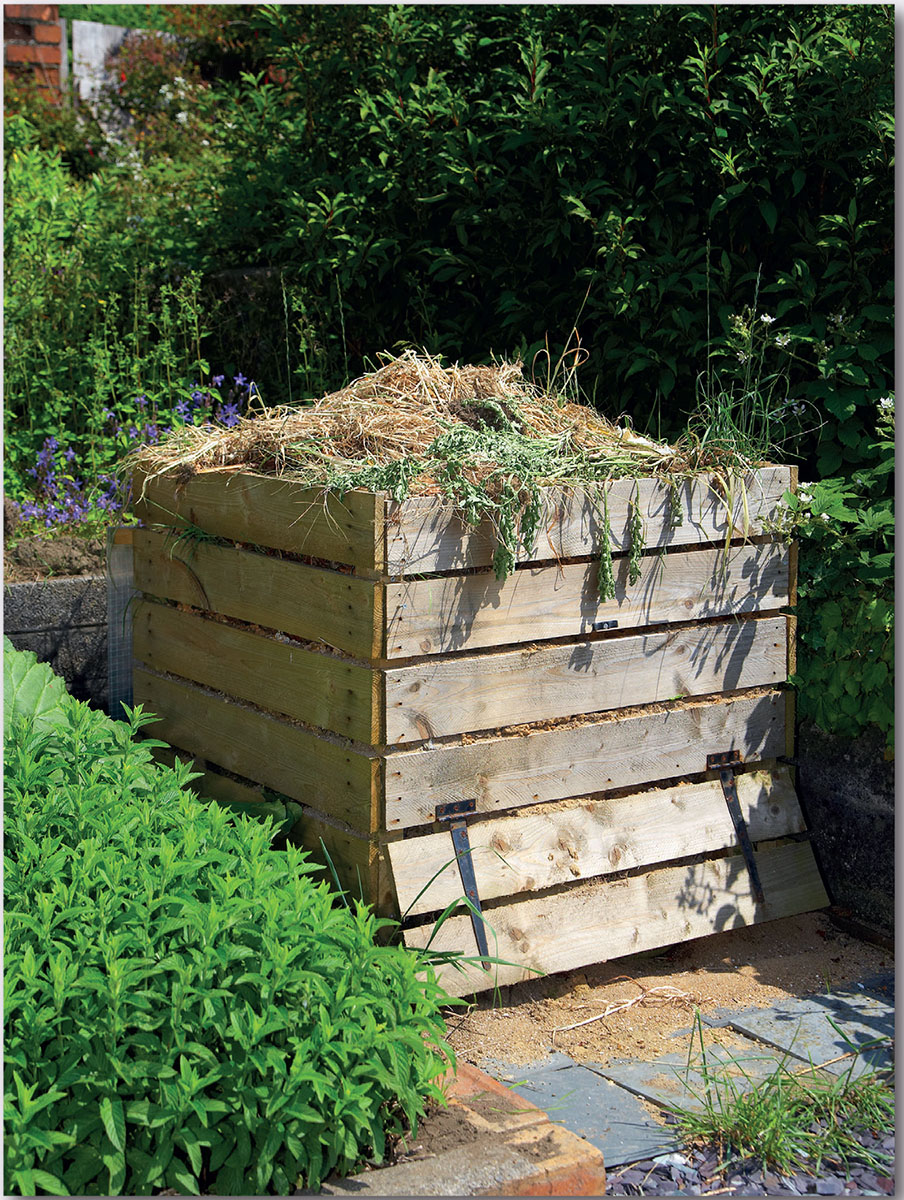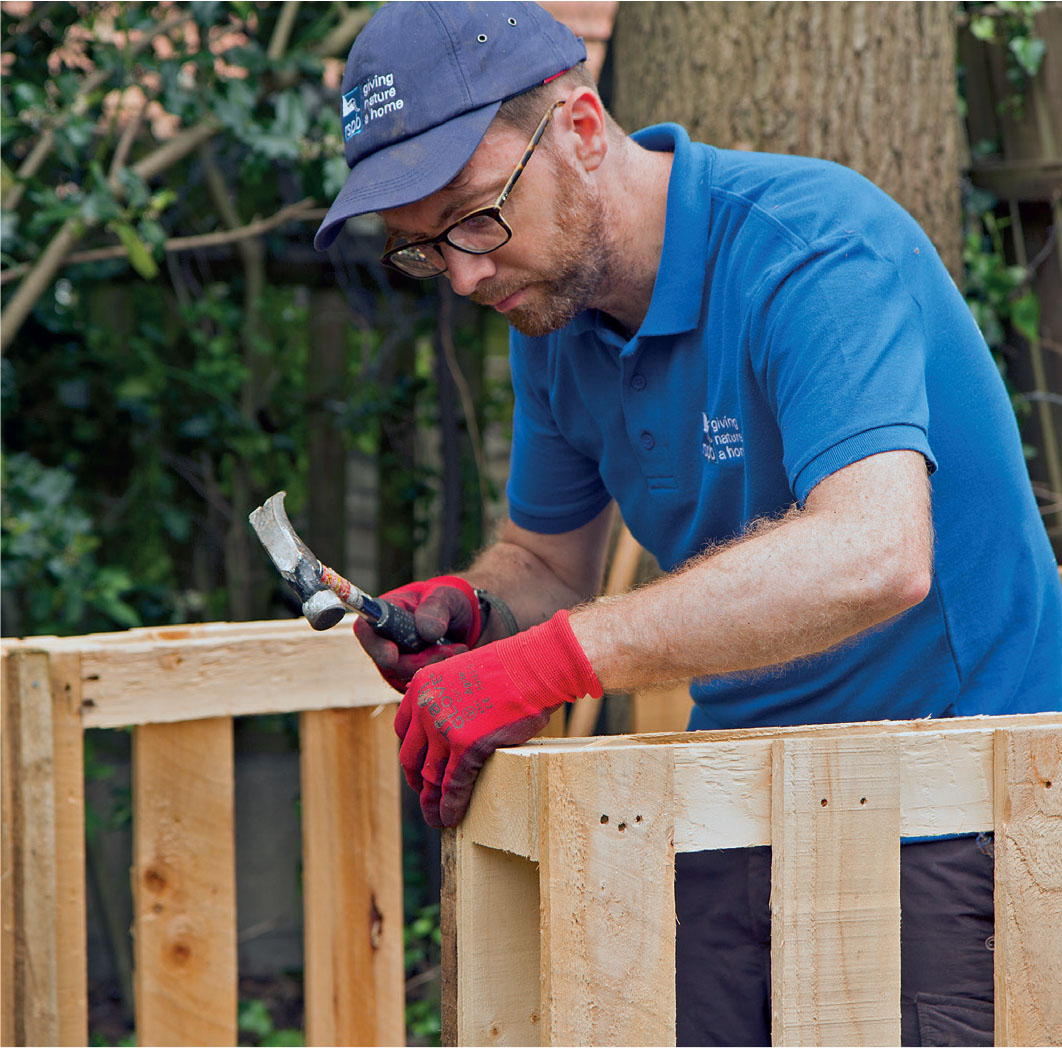
Making a Hot-rot Home
No hotel is complete without a sauna, and with a compost heap you can create your very own wildlife steam-room.
Composting only happens because of wildlife. Old bits of plant go in (right), something breaks it down, and out comes compost. That ‘something’ can be fungi, yeasts, worms, slugs, snails, woodlice or other small creatures, but bacteria do most of the legwork. The process creates lovely, crumbly, rich, brown fertiliser to go back onto the garden, and it creates heat, so much so that the centre of a well-made heap can be as high as 60°C.

The inspiration

Nature makes its own compost heaps. Autumn leaves blow into piles such as this, while rivers wash up damp mounds of flotsam during floods.
Natural compost heaps work for wildlife because they are open and easy to access. Creatures large and small can get into them easily, with the smaller ‘detritivores’ munching their way through the rotting vegetation and the larger animals rummaging through to find the smaller ones.
Frogs, toads, Hedgehogs and some birds such as Robins and Wrens all love the chance to probe through a bit of compost.
Compost is great at holding in moisture, and at the same time the process of decomposition often generates considerable heat. Many creatures love this moist, warm blanket.
Grass Snakes and Slow-worms are compost specialists. The Grass Snake uses piles of rotting vegetation to help incubate its eggs, while Slow-worms seem to like bearing their live young here.
It’s possible to replicate nature by composting in free-standing heaps, but using a container is usually neater and the process is faster.
How to make your hot-rot home: step by step

1. Make your compost heap of slatted wood
It is nigh on impossible for most creatures to get into a closed plastic composter, while a wire mesh heap can allow too much heat to escape, so make it from something like old pallets. Size is important – it ideally needs to be at least 1m x 1m x 1m to allow the heap to heat up.
2. The heap should have an open bottom
Position it on soil rather than slabs so that soil creatures can work their way up into the compost. You can create your heap on a foundation of sticks if you wish – it will allow air into the base of the heap and offer hibernation sites for amphibians.
3. How to give it air without turning
Without oxygen, the compost won’t rot properly and will pong. The usual advice is to turn heaps with a fork but this is a problem if Slow-worms and Grass Snakes are breeding in there. The trick is always to mix up your carbon and nitrogen and never to have deep layers of just one of them. Follow this rule and you will never have to turn your heap. Check out the table below for ideal materials.
4. Compost needs moisture
Don’t drench it; just sprinkle on the contents of a watering can in dry weather.
5. Keep the heat in
Lay an old square of carpet or (even better) a corrugated, bitumen roofing sheet (see here) on top to keep in the heat – Slow-worms and amphibians will happily hide beneath it.
6. If you have the room, have two heaps or more One can be your active pile, while the others are left undisturbed to finish rotting down.
What can go on the compost heap?
 carbon
carbon
Shredded non-glossy paper and cardboard (most printing inks are vegetable-based these days)
Hay and straw
Sticks and twigs, preferably shredded
Dead leaves (including tea bags)
Wood chippings
Eggshells
 nitrogen
nitrogen
Grass clippings
Annual weeds
Horse manure
Vegetable peelings including orange peel
Chicken manure

Meat and bones
Cooked vegetables
Perennial weeds and their seeds
Bread, cooked rice, etc
Diseased plants
Pet waste
Hot-rot but rat-free
Rats and mice will probably visit most compost heaps from time to time, but if you follow the table above strictly, they are unlikely to stay. In the rare case that they do take up residence, don’t add vegetable peelings either. Rodents also like to tunnel into the base of the heap, so exclude them when you build your heap by laying a fine wire mesh on the ground.